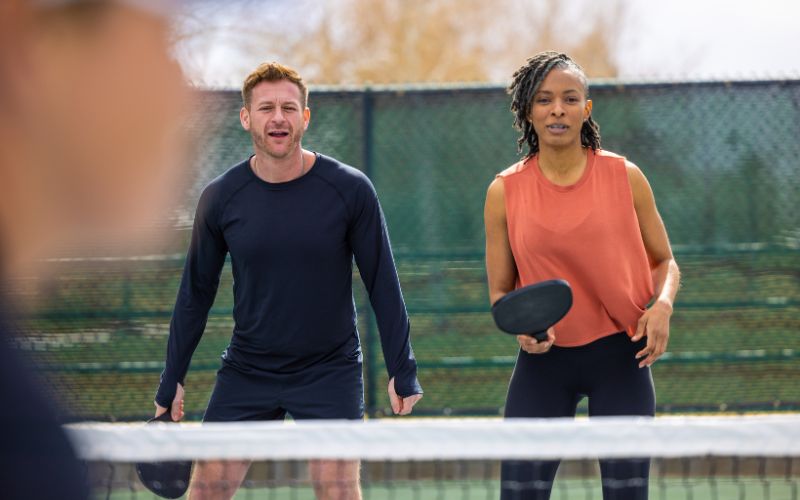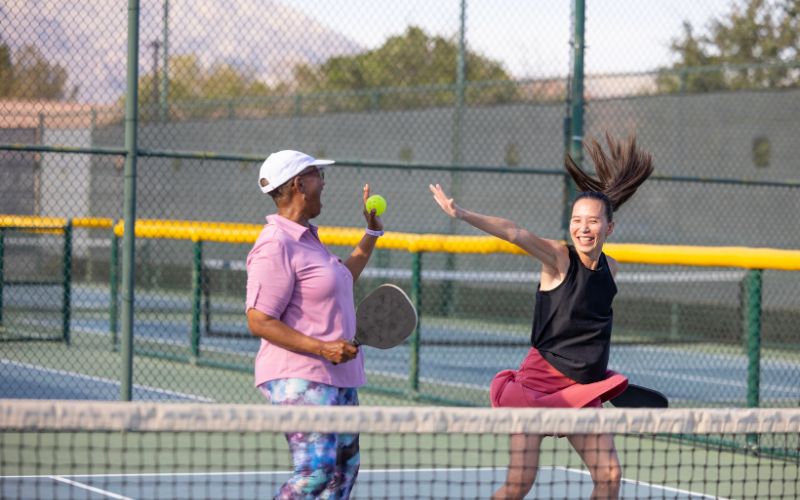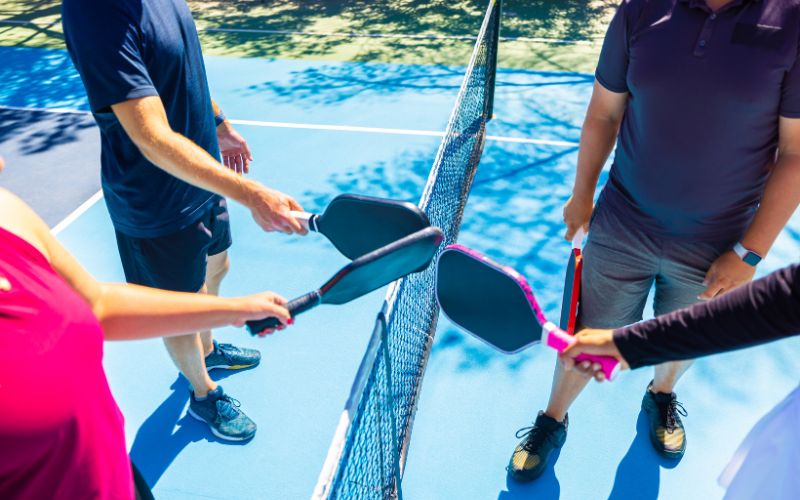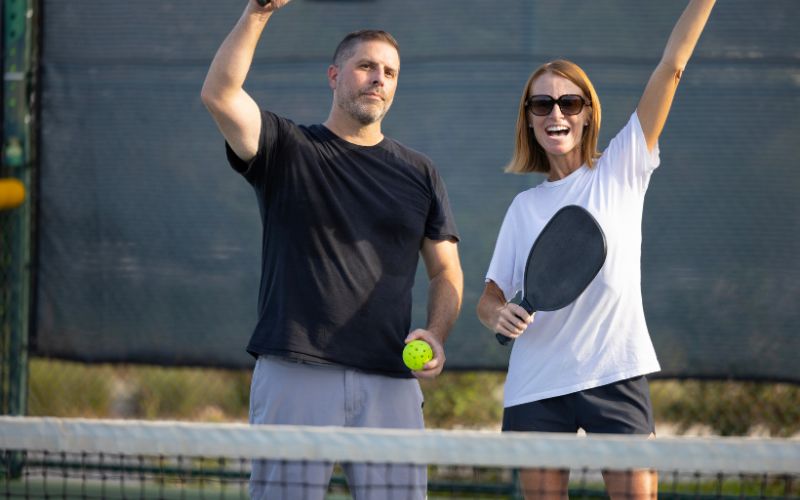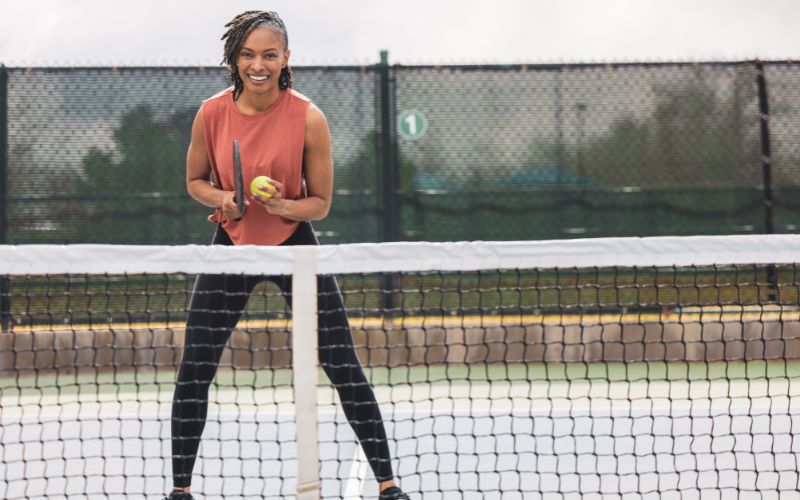Racquet sports have always held a unique place in the world of athletics, offering a blend of physical activity, skill, and social interaction that draws people from all walks of life. Tennis and pickleball, two sports that involve rackets and a ball, have captured the hearts of many enthusiasts. In this comprehensive comparison, we’ll explore the world of pickleball and tennis, examining their origins, Pickleball/Tennis court and Pickleball/Tennis equipment, gameplay, physical demands, tennis racquets, pickleball paddles and much more. Whether you’re an experienced player or a curious beginner, this article aims to provide a detailed and insightful perspective on these beloved sports.
Tennis and pickleball – two names that resonate with sports aficionados around the globe. Both games require precision, agility, and strategy, yet they each possess their own unique charm. As we embark on this comparison, we’ll unravel the distinct characteristics that set these two racket sports apart.
History and Origins
Tennis: A Classic Game of Tradition
Tennis boasts a rich history dating back to the 19th century, with roots in France and England. It has evolved from its origins as “real tennis” to the modern version we know today. Tennis courts, often associated with pristine grass and professional tournaments like Wimbledon, have a timeless appeal.
Pickleball: The Sport Born in Backyards
Pickleball, unlike tennis, is a relatively new kid on the block. Invented in the mid-1960s, it began as a backyard game and has since grown into a major racket sport. Pickleball courts, typically smaller than tennis courts, provide a unique playing experience.
Which Is Easier to Play, Tennis or Pickleball?
Tennis: A Game of Precision and Power
Tennis is often perceived as the more challenging of the two sports, primarily due to its larger court and faster-paced gameplay. Serving in tennis can be a daunting task, requiring precision, power, and consistency.
Pickleball: A Beginner-Friendly Option
Pickleball is often considered easier for beginners, thanks to its smaller court size and slower-paced gameplay. The pickleball serve, which is underhand and resembles a modified form of table tennis, is often more accessible to new players.
Why Do People Like Pickleball More Than Tennis?
Pickleball’s popularity has surged in recent years, and there are several reasons why people are drawn to it over tennis.
Lower Impact Sport: Pickleball is often seen as a lower-impact sport than tennis, making it more accessible to a wider age range, including seniors. The smaller court and slower pace reduce the physical demands on players.
Social and Community Aspect: Pickleball has a reputation for being a highly social sport. It’s often played as doubles, promoting a sense of camaraderie on the court. It’s common to see players of all skill levels enjoying pickleball together.
Faster Learning Curve: Due to the simpler rules and more forgiving equipment, pickleball has a faster learning curve, making it easier for beginners to pick up the game and have fun from the start.
Court and Equipment
Court Size and Surfaces
Tennis courts are known for their standard dimensions and varying surfaces, including grass, clay, and hard courts. In contrast, pickleball courts are consistently smaller and usually made of hard surfaces like asphalt or specially designed pickleball court materials.
Racket and Paddle: The Tools of the Trade
Both sports involve rackets (tennis) or paddles (pickleball) as essential equipment. Tennis players use larger, stringed racquets to strike a tennis ball, while pickleball players wield paddles designed for striking a perforated plastic ball.
Scoring and Gameplay
Tennis: The Complex Scoring System
Tennis employs a more complex scoring system with terms like “love,” “deuce,” and “advantage.” A set typically requires winning six games, with a best-of-three or best-of-five set format.
Pickleball: Simplified Scoring
Pickleball has a simpler scoring system, with points scored in increments of 1. The first team to reach 11 points, with a lead of at least 2 points, wins the game. Matches are usually played in a best-of-three or best-of-five format.
Physical Demands and Fitness
Tennis: A Sport of Intensity
Tennis is known for its intense physical demands, requiring players to cover a large court quickly. The sport places a premium on agility, speed, and endurance. Competitive tennis players are some of the fittest athletes in the world.
Pickleball: Lower Impact, Great Fun
Pickleball offers a more accessible experience with less physically demanding gameplay. While it still provides a solid workout, the smaller court size and slower pace make it a fantastic choice for individuals of all fitness levels.
Skill Development and Learning Curve
Tennis: A Skill-Intensive Game
Tennis is renowned for its steep learning curve, demanding precision, strong technique, and an understanding of various shots like forehand, backhand, and serve. Becoming a competitive tennis player takes time and dedication.
Pickleball: A Quicker Path to Play
Pickleball has a more forgiving learning curve, making it easier for beginners to get into the game and enjoy it right away. Players can quickly develop the basic skills necessary to participate in friendly matches.
Community and Social Aspects
Tennis: Individual Excellence
Tennis is often associated with individual excellence. While there are doubles matches in tennis, many competitive players pursue singles matches, where the focus is on personal performance.
Pickleball: The Joy of Doubles
Pickleball is renowned for its emphasis on doubles play. The sport promotes camaraderie and social interaction, making it a great choice for those who enjoy playing with friends or meeting new people.
Inclusivity and Adaptability
Both Sports: Adaptability for All Ages
Both tennis and pickleball can be adapted for players of all ages and physical abilities. They offer opportunities for individuals to enjoy the sports regardless of their skill level or mobility.
Pickleball: A Senior-Friendly Sport
Pickleball has garnered particular attention as a senior-friendly sport due to its lower impact on joints, making it accessible and enjoyable for older players.
Pickleball vs. Tennis: Pros and Cons
Tennis: The Allure of Tradition
Tennis boasts a rich history and tradition that draws players to its grand tournaments and iconic venues. It’s known for its physically demanding gameplay, precision, and global following.
Pickleball: A Growing Sensation
Pickleball is a fast-growing sport known for its accessibility, inclusivity, and social atmosphere. It provides an enjoyable experience for players of all levels and ages.
What 3 Sports Is Pickleball Like?
Pickleball shares elements with various sports:
Tennis: Pickleball draws significant inspiration from tennis, especially in terms of court dimensions, scoring, and use of rackets or paddles.
Badminton: The game’s net and the underhand serve are reminiscent of badminton, adding unique characteristics to pickleball.
Table Tennis (Ping Pong): The pace and dynamics of pickleball are akin to table tennis, with quick rallies and dexterity playing a significant role.
Choosing the Right Sport for You
Selecting between pickleball and tennis ultimately depends on your preferences, fitness level, and what you seek in a sport.
Tennis: The Ultimate Challenge
If you’re looking for a physically challenging sport with a rich history and tradition, tennis may be your ideal choice. It offers intense competition and a chance to master a wide range of shots.
Pickleball: Fun and Social Interaction
Pickleball is perfect for those who want a fun and social racket sport with a quicker learning curve. It emphasizes camaraderie and inclusivity, making it accessible to a wide audience.
Conclusion: A Racket Sport for Everyone
Whether you opt for tennis or pickleball, both sports offer unique experiences and the joy of racket play. Tennis brings tradition, precision, and athleticism, while pickleball offers accessibility, inclusivity, and social interaction. Ultimately, the choice between these two racket sports depends on your personal preferences and what you value most in your athletic pursuits.
In the world of racket sports, there’s room for everyone to enjoy the exhilaration of the game. It’s not about choosing one over the other; it’s about finding the sport that brings you the most satisfaction and excitement. So, grab your racket or paddle, step onto the court, and relish the joy of playing a game you love. Whether it’s the elegance of tennis or the friendliness of pickleball, there’s a racket sport for everyone.
The burst of energy on the court, the thrill of a well-executed shot, and the laughter with friends – that’s the essence of racket sports, and it’s an experience that transcends the boundaries of age, skill, and competition.
FAQs
How do the origins of tennis and pickleball differ?
Tennis, with a history dating back to the 19th century, has its roots in France and England. Pickleball, on the other hand, is a relatively new sport, invented in the mid-1960s, and began as a backyard game.
Which sport, tennis or pickleball, is easier for beginners to play?
Pickleball is often considered easier for beginners due to its smaller court size and slower-paced gameplay, making it more accessible for new players.
What makes pickleball more popular than tennis for some people?
Pickleball’s growing popularity is attributed to factors like being a lower-impact sport, its strong social and community aspects, and the faster learning curve for beginners.
What are the key differences between tennis and pickleball courts?
Tennis courts are known for their standard dimensions and various surfaces. In contrast, pickleball courts are consistently smaller and are usually made of hard surfaces, offering a different playing experience.
How does scoring differ between tennis and pickleball?
Tennis employs a more complex scoring system with terms like “love,” “deuce,” and “advantage.” Pickleball, in comparison, has a simpler scoring system, with points scored in increments of 1.

